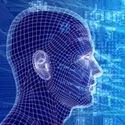
A Different Einstein on Another Old Problem
So far, the technical world has done a pretty good job of keeping all of the data stored somewhere. The problem has mostly been about how to process that data. However, according to NetApp’s Dave Einstein, that will not always be the case.
 According to Einstein (who is not a physicist), the world’s data will grow by a factor of 50 by the year 2020, whereas hard drive storage will only grow by about fifteen. To alleviate that problem, Einstein outlined some creative, if sometimes outlandish, solutions to this impending data storage crisis.
According to Einstein (who is not a physicist), the world’s data will grow by a factor of 50 by the year 2020, whereas hard drive storage will only grow by about fifteen. To alleviate that problem, Einstein outlined some creative, if sometimes outlandish, solutions to this impending data storage crisis.
A central plot point to the Star Trek: The Next Generation episode, “The Drumhead,” involved a Klingon spy encrypting information biologically so it could be injected into an unwitting passerby and retrieved later. It seemed like a ridiculous technology reserved for the 24th century. According to Einstein, scientists at the Chinese University of Hong Kong figured out how to do just that.
Granted they did so by hiding it in the DNA of E. coli bacteria, excess amounts of which are not welcome in humans, but the premise is the same. Reportedly, the bacteria could hold any type of data and it would last, provided the E. coli were allowed to multiply and not killed off. “A single gram of the bacteria,” writes Einstein “could hold as much as 450 conventional 2-terabyte hard drives.”
It is unclear whether or not the data would be able to do anything once stored in the bacteria, but that is beyond the scope of Einstein’s article. Such biological storage, if reliable, could prove to displace the tapes and disks currently used for long-term storage. Further, growing bacteria is significantly easier and cheaper than laser crafting disks such that every possible bit is stored in them.
Einstein’s second proposal is actually one scientists are hard at work on: the quantum computer. Physicists like Michio Kaku have declared that the quantum computer would be the final word in encryption and security. Encryption is dependent on the generating of large prime factors. While current high-security computers can generate large enough numbers to keep most hackers at bay, quantum computers (which would operate in qubits instead of bits) would generate such high numbers that it would take longer than the age of the universe to decipher them.
According to Einstein, that quantum computer is closer to reality, thanks to researchers at Harvard, the Max Planck Institute, and Caltech. Those researchers have reportedly been able to capture a quantum state in a crystal for a little over a second at room temperature, where the key phrases are ‘at room temperature’ and ‘a little over a second.’
‘At room temperature’ is important because generally for exciting things to happen in physics these days, conditions need to be super-hot or super-cool, a state that is too energy-demanding to be considered viable. While many ‘a little over a second’ units of time pass as this article is written, it is an eternity in quantum physics, and therefore a significant breakthrough.
Quantum computers can hypothetically store so much information because not only does its unit of storage, the qubit, store eight times the information of the bit, but as a result of quantum entanglement the qubits literally communicate with each other instantly. Our computers are limited by the speed of light. The speed of light is fast, but if a computer has to execute a billion interactions to perform an operation, that speed adds up and the result is less than instantaneous.
Einstein’s third suggestion is a little too outlandish, essentially suggesting the building of a computerized Dyson’s sphere that encircles the sun and runs on its energy. However, the biological storage and quantum computer developments are promising enough that the impending data storage crisis may never come after all.
Related Stories
Researchers Germinate Novel Approach to Big Bio Data






























